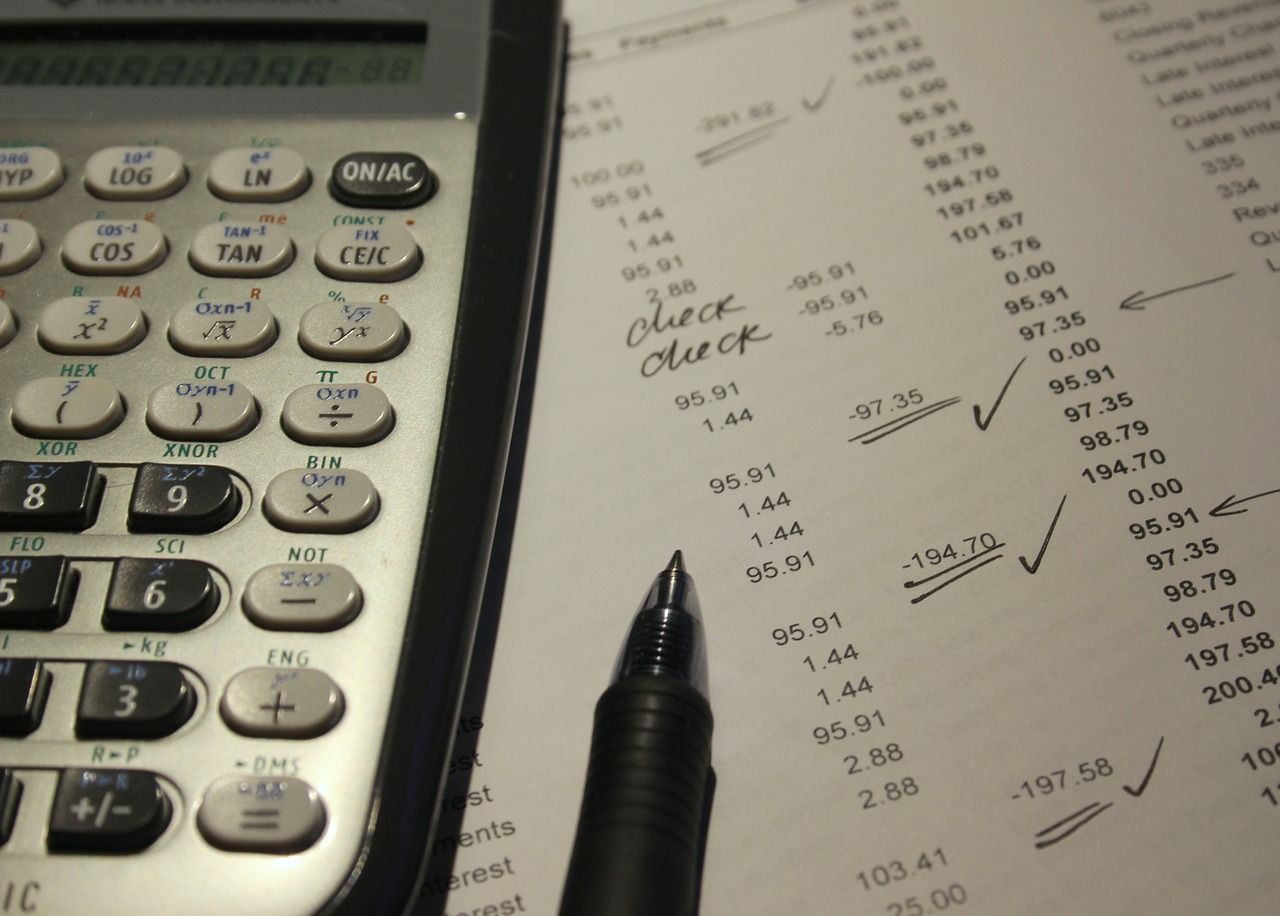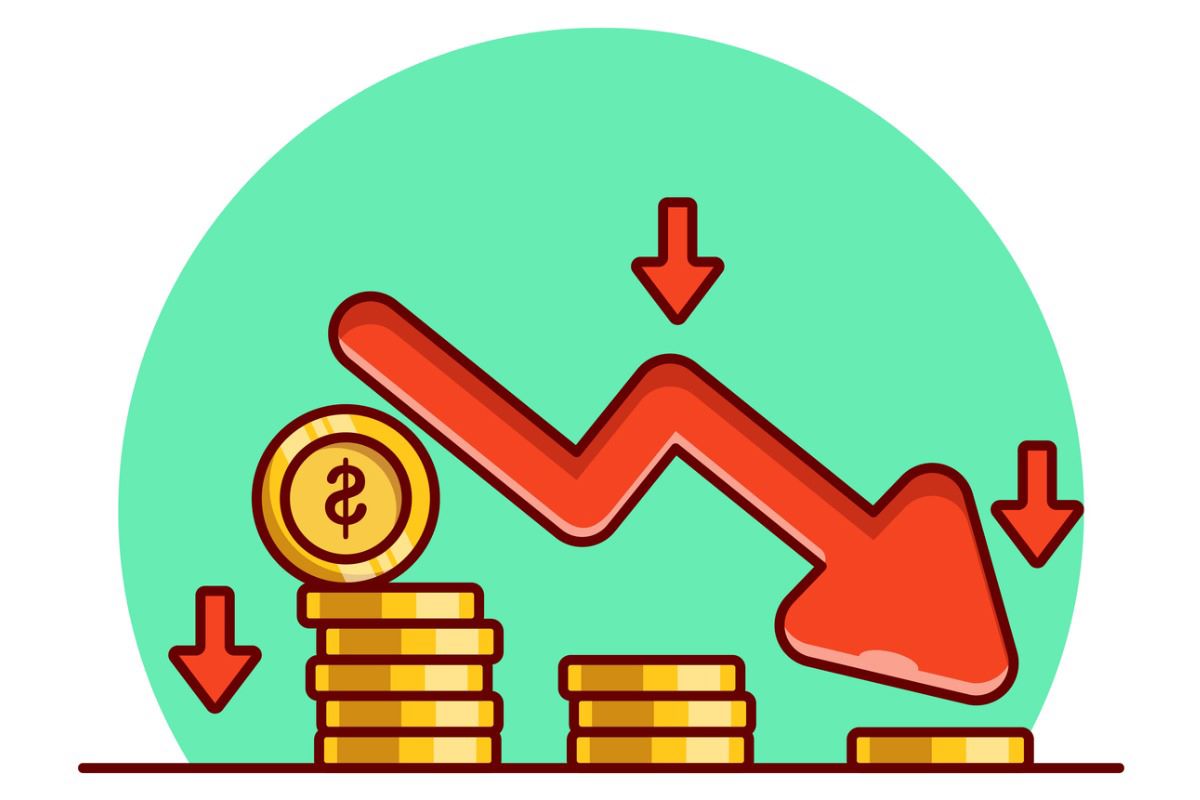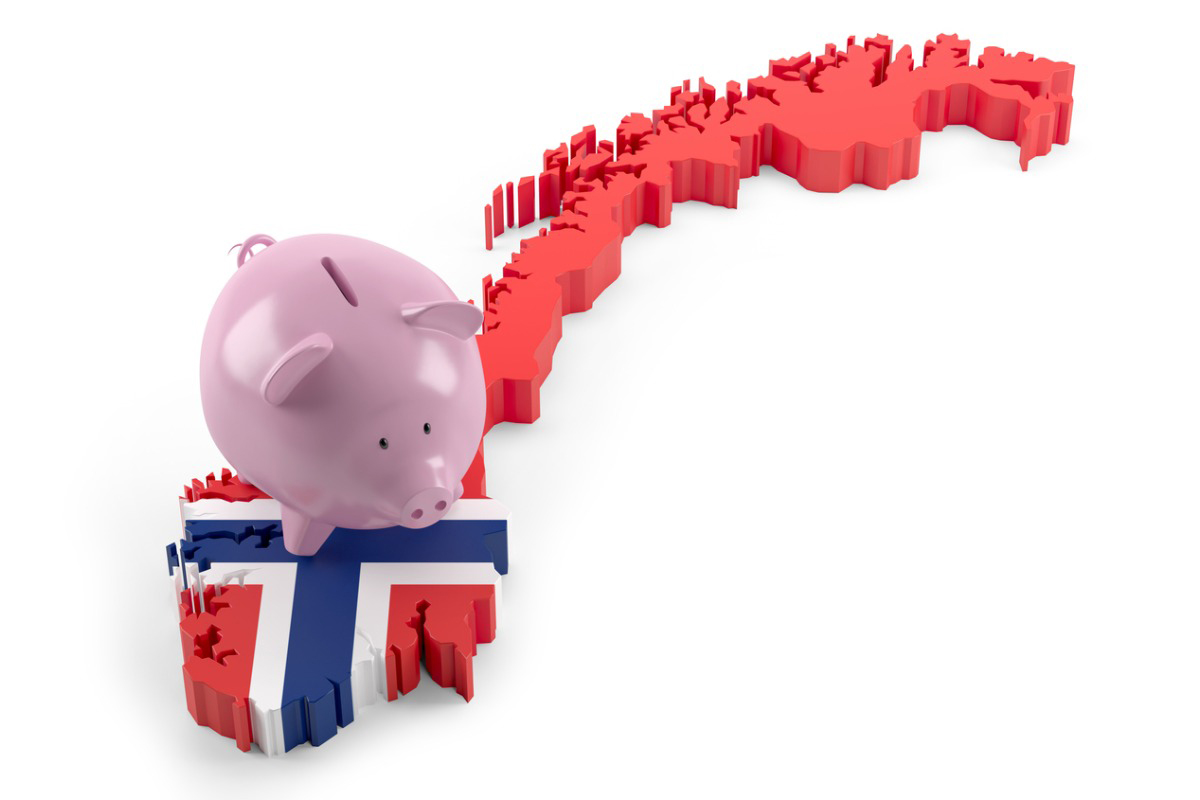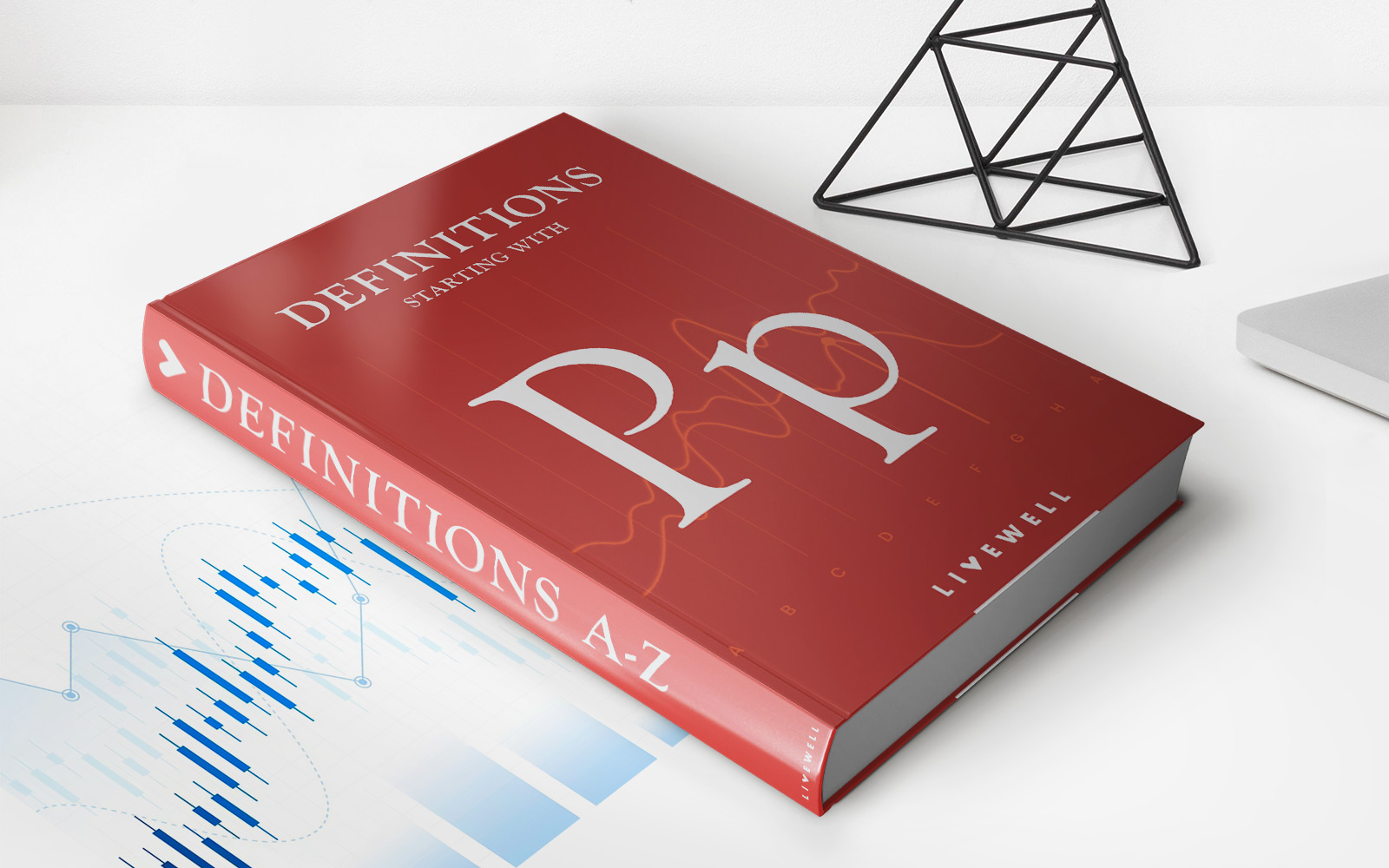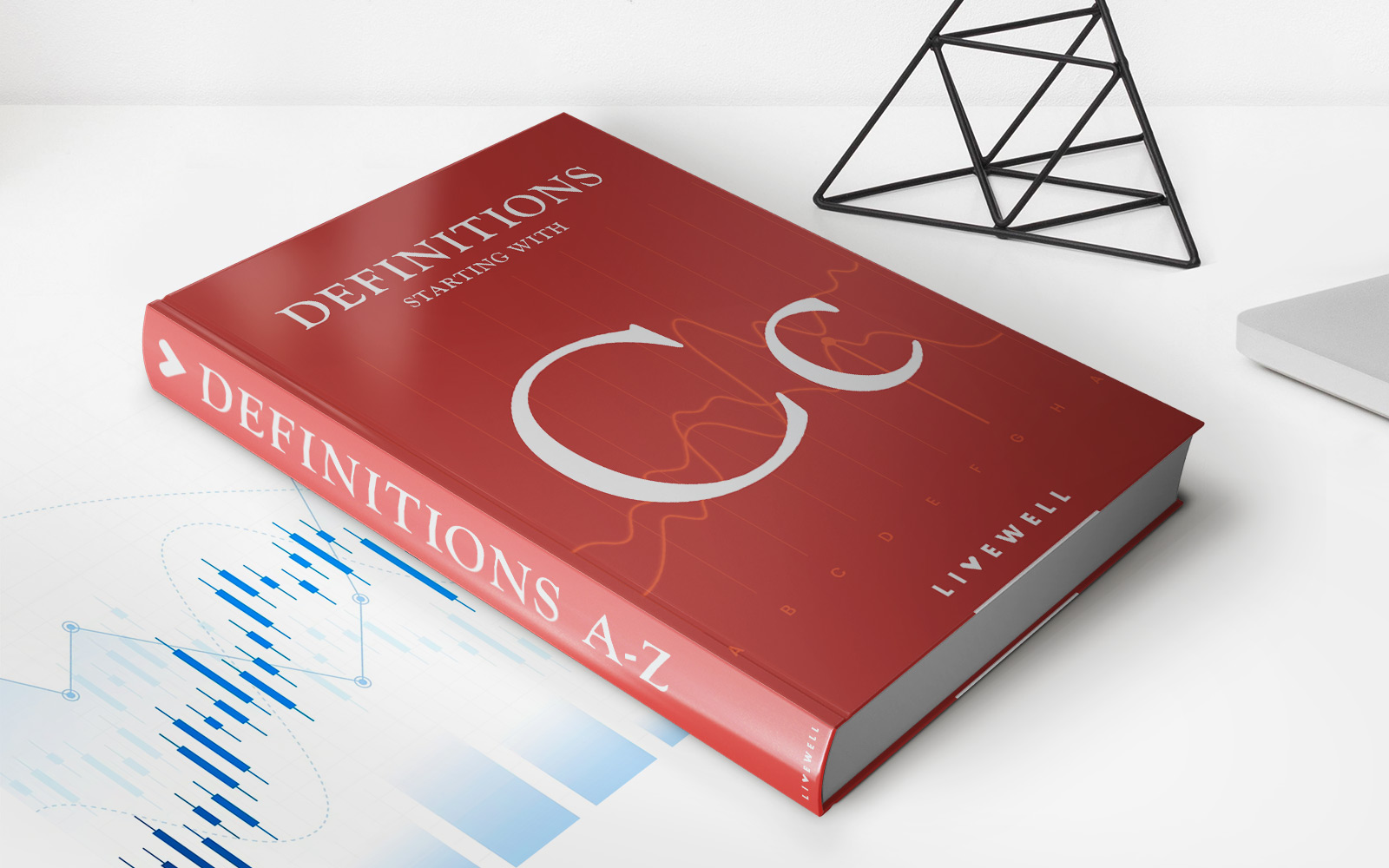

Finance
What Is A Self Invested Personal Pension
Published: November 27, 2023
Discover the benefits of a Self Invested Personal Pension and take control of your financial future. Find out how to invest wisely and secure your retirement with our finance guide.
(Many of the links in this article redirect to a specific reviewed product. Your purchase of these products through affiliate links helps to generate commission for LiveWell, at no extra cost. Learn more)
Table of Contents
- Introduction
- Definition of a Self Invested Personal Pension (SIPP)
- Key Features and Benefits of a SIPP
- How Does a SIPP Work?
- Eligibility and Contribution Limits for a SIPP
- Investment Options for a SIPP
- Managing and Monitoring a SIPP
- Tax Advantages and Considerations of a SIPP
- Withdrawals and Retirement Options with a SIPP
- Comparison of SIPPs with Other Pension Options
- Conclusion
Introduction
Retirement planning is an essential aspect of financial management, and one of the key components of a well-rounded retirement portfolio is a Self Invested Personal Pension (SIPP). SIPPs provide individuals with greater control and flexibility over their pension savings, allowing them to make investment decisions that align with their financial goals and risk appetite.
A Self Invested Personal Pension (SIPP) is a type of personal pension scheme that gives individuals the freedom to choose and manage their own investments. Unlike traditional pension plans, where investments are managed by a pension provider, SIPPs enable individuals to take charge of their retirement savings.
With a SIPP, individuals have the flexibility to invest in a wide range of assets, including stocks, bonds, mutual funds, exchange-traded funds (ETFs), and even commercial property. This diversity of investment options allows individuals to build a pension portfolio that reflects their unique investment strategy and aims to achieve long-term growth.
One of the key advantages of a SIPP is the tax benefits it offers. Contributions made into a SIPP are eligible for tax relief, meaning that individuals can receive tax relief on their contributions at their marginal income tax rate. This provides a valuable incentive to boost pension savings and can result in substantial tax savings over the long term.
Furthermore, any investment gains within a SIPP are tax-free, allowing the portfolio to grow without being eroded by taxes. This tax efficiency makes SIPPs an attractive option for retirement savings, particularly for individuals with a higher income tax bracket.
In this comprehensive guide, we will delve deeper into the world of SIPPs, exploring their key features, benefits, eligibility criteria, investment options, tax advantages, and withdrawal options. Whether you are just starting to consider your retirement plans or looking to optimize your existing pension portfolio, this article aims to provide you with a clear understanding of SIPPs and how they can be a valuable tool in your retirement planning strategy.
Definition of a Self Invested Personal Pension (SIPP)
A Self Invested Personal Pension (SIPP) is a type of personal pension scheme that offers individuals a wide range of investment options and allows them to take control of their pension savings. Unlike traditional pension plans, where investments are managed by the pension provider, SIPPs give individuals the freedom and flexibility to choose and manage their own investments.
SIPPs are regulated by the Financial Conduct Authority (FCA) and governed by strict rules to protect the interests of pension holders. They are designed to provide individuals with more choices and control over how their pension funds are invested, with the aim of achieving better returns and potentially growing the pension pot more effectively.
With a SIPP, individuals can invest in a diverse range of assets, including stocks, bonds, mutual funds, commercial property, and even more sophisticated investments such as hedge funds and private equity. This expansive choice of investment options enables individuals to tailor their pension portfolio to suit their investment goals, risk tolerance, and personal circumstances.
One of the standout features of SIPPs is their ability to hold a wide range of investments within a single pension wrapper. This means that individuals can consolidate multiple pensions from different providers into a SIPP, bringing all their pension assets under one roof and simplifying their retirement planning.
SIPPs also provide individuals with the flexibility to adjust their investment strategy over time. As personal circumstances and market conditions change, individuals can make real-time adjustments to their investment holdings, which can be crucial in maximizing the growth potential of their pension fund.
Furthermore, SIPPs can be accessed and managed through various channels, including online platforms and mobile apps provided by SIPP providers. This accessibility and convenience allow individuals to stay connected to their pension investments, monitor their portfolio performance, and make informed investment decisions on the go.
It is important to note that while SIPPs offer greater control and investment choices, they also come with additional responsibilities. With the ability to invest in a wide range of assets, individuals must conduct thorough research, understand the risks associated with each investment, and make informed decisions to ensure their pension portfolio aligns with their risk tolerance and long-term goals.
In the next sections, we will explore the key features and benefits of SIPPs in more detail, providing you with a comprehensive understanding of how SIPPs work and the advantages they offer in comparison to other pension options.
Key Features and Benefits of a SIPP
Self Invested Personal Pensions (SIPPs) offer a multitude of features and benefits that make them an attractive option for individuals looking to take control of their retirement savings. Let’s explore some of the key features and benefits of a SIPP:
- Investment Flexibility: One of the main advantages of a SIPP is the wide range of investment options available. Individuals have the freedom to invest in stocks, bonds, mutual funds, ETFs, commercial property, and more. This flexibility allows individuals to diversify their portfolio and potentially achieve higher returns.
- Control and Autonomy: With a SIPP, individuals have the power to make their own investment decisions. This level of control and autonomy is appealing to those who want to have a say in how their pension funds are invested. It also allows individuals to align their investments with their specific financial goals and risk appetite.
- Consolidation of Pensions: SIPPs offer the option to consolidate multiple pensions into one account. This simplifies the management of retirement savings, as individuals can bring all their pension assets under one roof. It also provides a clearer view of the overall pension portfolio and can potentially reduce administrative costs.
- Tax Efficiency: Contributions made into a SIPP are eligible for tax relief at the individual’s marginal income tax rate. This means that individuals can receive tax relief on their contributions, effectively reducing their taxable income. In addition, any investment gains within a SIPP are tax-free, allowing the pension pot to grow without being eroded by taxes.
- Flexible Contribution Limits: SIPPs come with flexible contribution limits, allowing individuals to contribute as much or as little as they want, within the annual allowance set by the government. This provides individuals with the flexibility to adapt their contributions based on their financial circumstances and retirement goals.
- Access to Expert Advice: Most SIPP providers offer access to expert financial advice, either in-house or through partnerships with financial advisors. This can be invaluable for individuals who may require assistance in making investment decisions or planning their retirement strategy.
- Transparency and Accessibility: SIPPs are known for their transparency, with detailed reporting and regular updates on the performance of investments. Many SIPP providers offer online portals and mobile apps that provide easy access to account information, enabling individuals to monitor their pension investments and make informed decisions.
- Flexibility in Retirement Options: When it comes to retirement, SIPPs offer individuals a range of options. They can choose to take a tax-free cash lump sum, purchase an annuity, or opt for flexible drawdown, which allows them to access their pension funds while keeping the remainder invested. This flexibility provides individuals with control over their retirement income strategy.
Overall, SIPPs provide individuals with the flexibility, control, and potential for higher returns. They offer a level of customization and investment choice that may not be available in traditional pension plans. However, it is important to carefully consider one’s investment knowledge, risk tolerance, and financial goals before engaging in SIPP investing.
How Does a SIPP Work?
A Self Invested Personal Pension (SIPP) operates as a personal pension scheme where individuals can manage and control their own pension investments. Understanding how a SIPP works is essential for individuals looking to make informed decisions about their retirement savings. Here’s a breakdown of how a SIPP operates:
Setting Up a SIPP: To initiate a SIPP, individuals need to choose a SIPP provider. There are various providers available in the market, offering different investment options, services, and fee structures. It is important to research and compare providers to find the one that best suits individual needs and preferences.
Managing Contributions: Once a SIPP is set up, individuals can start making regular or one-off contributions to their pension fund. Contributions made into a SIPP are usually eligible for tax relief at the individual’s marginal income tax rate, subject to certain limits set by the government. This tax relief effectively boosts the amount invested in the pension fund, helping to grow the overall retirement savings.
Investment Choices: One of the key features of a SIPP is the wide range of investment options available. Individuals can choose to invest in various assets, including stocks, bonds, mutual funds, ETFs, commercial property, and more. It is important to note that the investment choices and restrictions may vary depending on the SIPP provider and the specific rules of the scheme.
Monitoring and Managing Investments: With a SIPP, individuals have the autonomy to monitor and manage their own investments. SIPP providers typically offer online platforms or mobile apps that allow individuals to track the performance of their investments, make investment decisions, and execute trades. Regular monitoring is crucial to ensure the pension portfolio aligns with the individual’s risk tolerance, financial goals, and market conditions.
Tax Advantages: SIPPs offer attractive tax benefits to individuals. Contributions made into a SIPP are eligible for tax relief, meaning individuals can receive tax relief on their contributions at their marginal income tax rate. Furthermore, any investment gains within a SIPP are tax-free, allowing the pension pot to grow without being eroded by taxes. It is important to consult with a financial advisor or tax professional to understand the specific tax implications of a SIPP based on individual circumstances and tax regulations.
Retirement Options: As individuals approach retirement, they can choose from various options for accessing their SIPP funds. Some common options include taking a tax-free cash lump sum, purchasing an annuity to provide a guaranteed income for life, or opting for flexible drawdown, which allows individuals to access their pension funds while keeping the remainder invested. The flexibility of retirement options offered by a SIPP allows individuals to customize their retirement income strategy to suit their specific needs and circumstances.
Seeking Professional Advice: While SIPPs offer individuals the freedom to manage their own pension investments, it is essential to consider seeking professional advice when making investment decisions or planning for retirement. Financial advisors can provide guidance on asset allocation, risk management, and retirement planning strategies, ensuring that individuals make informed decisions that align with their goals and risk tolerance.
Throughout the SIPP journey, it is important to regularly review and reassess the pension portfolio to ensure it remains aligned with one’s financial goals and risk appetite. This may involve adjusting investment holdings, contribution amounts, or retirement strategies based on changing personal circumstances and market conditions.
By understanding the workings of a SIPP and staying informed about investment options, regulations, and tax implications, individuals can make the most of their retirement savings and take control of their financial future.
Eligibility and Contribution Limits for a SIPP
To open a Self Invested Personal Pension (SIPP), individuals must meet certain eligibility criteria. Additionally, there are contribution limits in place to ensure fairness and compliance with government regulations. Understanding the eligibility requirements and contribution limits is vital for proper planning and utilization of a SIPP. Let’s delve into these aspects:
Eligibility: In general, anyone under the age of 75 can open a SIPP, regardless of whether they are employed, self-employed, or not currently working. This means that individuals in various employment situations, including the employed, the self-employed, directors of limited companies, and even non-working spouses and partners, can contribute to a SIPP.
Contribution Limits: SIPPs have flexible contribution limits, allowing individuals to contribute as much or as little as they want, within certain boundaries. The main contribution limits to be aware of include:
- Annual Allowance: The annual allowance is the maximum amount that can be contributed to a pension in a tax year while still receiving tax relief. The current annual allowance is £40,000 (2021/2022 tax year), but it is subject to change and may be reduced for higher earners.
- Tapered Annual Allowance: For individuals with a higher income, the annual allowance may be tapered down. The tapering applies if an individual’s adjusted income exceeds £240,000 and their threshold income exceeds £200,000. In such cases, the annual allowance can be gradually reduced to a minimum of £4,000.
- Carry Forward: The carry forward rule allows individuals to make use of any unused annual allowance from the previous three tax years. This means that if an individual hasn’t maximized their pension contributions in the past, they can carry forward the unused allowance and contribute more in the current tax year. However, the carry forward rule is subject to certain conditions, so it’s essential to consult with a financial advisor or tax professional to ensure compliance.
- Money Purchase Annual Allowance (MPAA): Once an individual starts accessing their pension flexibly, the MPAA may apply. The MPAA is a reduced annual allowance of £4,000, specifically for money purchase contributions. It is important to note that triggering the MPAA may limit the amount that can be contributed to other pension savings, so careful consideration should be given before accessing pension funds flexibly.
It’s crucial to stay updated on any changes to the annual allowance and associated regulations, as these can affect the amount that can be contributed tax-efficiently to a SIPP.
While SIPPs provide individuals with the flexibility to contribute and invest in their pension savings, it’s important to consider personal financial circumstances and consult with a financial advisor to determine the appropriate contribution level. This will ensure that individuals can make the most of their SIPP while optimizing tax advantages and staying within the allowable limits.
By understanding the eligibility criteria and contribution limits, individuals can effectively plan and manage their contributions to a SIPP, maximizing the benefits of this personal pension scheme.
Investment Options for a SIPP
One of the key advantages of a Self Invested Personal Pension (SIPP) is the wide range of investment options available to individuals. Unlike traditional pension plans, which may limit investment choices to a small selection of funds, SIPPs offer individuals the freedom to invest in a diverse array of assets. Let’s explore some of the investment options available within a SIPP:
- Stocks and Shares: With a SIPP, individuals can invest in individual company stocks listed on recognized stock exchanges. This allows individuals to build a portfolio of shares in companies they believe will provide long-term growth and potentially generate dividends.
- Bonds: Bonds are debt securities issued by governments, municipalities, or corporations. Investing in bonds within a SIPP can provide individuals with a fixed income stream and potentially lower volatility compared to equities.
- Mutual Funds and Unit Trusts: SIPPs offer the option to invest in professionally managed funds, such as mutual funds and unit trusts. These funds pool money from multiple investors to invest in a diversified portfolio of assets, providing access to a variety of investment strategies and asset classes.
- Exchange-Traded Funds (ETFs): ETFs are similar to mutual funds but trade on stock exchanges like individual stocks. They offer exposure to various asset classes, sectors, and geographical regions, providing investors with a flexible and cost-effective way to diversify their portfolio within a SIPP.
- Commercial Property: SIPPs allow individuals to invest in commercial properties such as offices, warehouses, and retail units. This offers the potential for rental income and capital appreciation, and provides diversification beyond traditional financial assets.
- Investment Trusts: These are closed-ended investment funds that are listed on stock exchanges. Investment trusts are managed by professional investment managers and can offer exposure to a variety of asset classes, geographical regions, and investment strategies.
- Hedge Funds and Private Equity: In certain cases, SIPPs may allow individuals to invest in more sophisticated assets such as hedge funds and private equity. These investments are typically higher risk and require a higher level of investment knowledge and experience.
It’s important to note that investment options may vary depending on the SIPP provider and their specific rules and offerings. It’s crucial to conduct thorough research and due diligence to choose a SIPP provider that aligns with investment goals and offers the desired investment options.
When considering investment options within a SIPP, it’s essential to consider personal risk tolerance, investment knowledge, and the capacity to monitor and manage the investments effectively. Seeking professional advice from a financial advisor is recommended to determine the appropriate asset allocation and investment strategy for an individual’s SIPP portfolio.
By taking advantage of the vast investment options available within a SIPP, individuals can create a well-diversified portfolio that aligns with their investment goals, risk tolerance, and time horizon. This flexibility and choice make SIPPs an attractive option for those seeking control over their pension investments.
Managing and Monitoring a SIPP
Managing and monitoring a Self Invested Personal Pension (SIPP) is a crucial part of maximizing its benefits and ensuring that investments align with one’s goals and risk tolerance. With the freedom to choose and manage investments within a SIPP, individuals have the responsibility to actively monitor and make informed decisions. Here are key considerations for managing and monitoring a SIPP:
Regular Portfolio Review: It is essential to regularly review the SIPP portfolio to ensure it remains in line with your investment goals and risk appetite. Market conditions, economic factors, and personal circumstances can change over time, so it’s crucial to assess the performance and diversification of investments on an ongoing basis. This may involve rebalancing the portfolio, adjusting asset allocations, or making new investment decisions.
Stay Informed: Keeping up with market trends, economic news, and changes in investment regulations is vital for informed decision-making. Regularly reading financial news, following reputable investment publications, and staying connected with investment communities can help you stay informed about potential opportunities and risks that may affect the SIPP portfolio.
Utilize Online Platforms and Tools: Many SIPP providers offer online platforms and tools that allow individuals to monitor and manage their pension investments. These platforms provide access to real-time account information, investment performance, and transaction history. They may also offer research tools and educational resources to help individuals make informed investment decisions.
Consider Professional Advice: Managing a SIPP can be complex, especially for individuals who may not have extensive investment knowledge or experience. Seeking professional advice from a financial advisor with expertise in pensions and investments can provide valuable insights and guidance. A financial advisor can help assess risk tolerance, develop an appropriate asset allocation strategy, and offer ongoing support in managing and monitoring the SIPP portfolio.
Review Costs and Fees: It’s important to understand the costs and fees associated with your SIPP. Different providers may have varying fee structures, including charges for account administration, trading fees, and investment management fees. Regularly reviewing the costs and fees associated with your SIPP ensures that you are optimizing the value of your investments and minimizing unnecessary expenses.
Stay Tax Compliant: With the potential tax advantages of SIPPs, it is crucial to stay tax compliant. Familiarize yourself with the relevant tax laws and regulations, especially regarding contributions, investment gains, and withdrawals from your SIPP. Consulting with a tax professional or financial advisor can help ensure that you are maximizing the tax benefits within the boundaries of the law.
Understand the Risks: Investing in a SIPP comes with risks, as the value of investments can fluctuate. It is important to understand the risks associated with different investment options within your SIPP and to assess your risk tolerance accordingly. Diversification, regular monitoring, and understanding the investment basics can help manage and mitigate risks effectively.
Managing and monitoring a SIPP requires active involvement and ongoing engagement. By regularly reviewing the portfolio, staying informed, utilizing online platforms or tools, leveraging professional advice when needed, and being tax-compliant, individuals can optimize the performance of their SIPP and work towards achieving their long-term financial goals.
Tax Advantages and Considerations of a SIPP
Self Invested Personal Pensions (SIPPs) offer several tax advantages that can significantly enhance the growth and efficiency of retirement savings. Understanding the tax benefits and considerations associated with a SIPP is essential for maximizing its advantages within the boundaries of the tax regulations. Here are some key tax advantages and considerations of a SIPP:
Tax Relief on Contributions: One of the major benefits of a SIPP is the tax relief available on contributions. When individuals contribute to a SIPP, they receive tax relief at their marginal income tax rate. This means that for every contribution made, the government adds tax relief, effectively boosting the amount invested in the pension pot. For example, if an individual is a basic rate taxpayer, a contribution of £1,000 to a SIPP would effectively cost them only £800 after tax relief.
Tax-Free Growth: Any investment gains within a SIPP are exempt from capital gains tax and income tax. This tax-free growth allows the pension pot to grow without being eroded by taxes, enhancing the potential for long-term wealth accumulation. Individuals can benefit from compounding returns, as the growth and income generated within the SIPP are reinvested without tax implications.
Tax-Free Cash Lump Sum: When individuals reach the age of 55 or the designated retirement age, they can typically withdraw up to 25% of their SIPP fund as a tax-free lump sum. This provides individuals with a degree of flexibility in accessing their pension savings, allowing for immediate financial needs or discretionary spending. The remaining funds in the SIPP can be used to provide a regular income in retirement.
Tax Considerations on Withdrawals: While the tax-free cash lump sum is tax-free, the remaining SIPP withdrawals are subject to income tax. When individuals start taking regular income or flexible drawdown from their SIPP, it is treated as taxable income in the year it is withdrawn. Careful planning is required to manage the tax implications and optimize the timing and amount of SIPP withdrawals to minimize the tax burden.
Lifetime Allowance: The Lifetime Allowance (LTA) is the maximum amount that an individual can accumulate in their pensions without incurring additional tax charges. The LTA is currently set at £1,073,100 (2021/2022 tax year) and is subject to change. If the total value of an individual’s pension savings exceeds the LTA, they may be subject to additional tax charges when taking benefits from the SIPP.
Carry Forward: The carry forward rules allow individuals to carry forward any unused annual allowance from the previous three tax years to contribute more to their SIPP. This can be beneficial for individuals who have not maximized their pension contributions in previous years and want to maximize tax relief within the limits of the annual allowance.
Considerations for Higher Earners: For individuals with a higher income, additional considerations come into play. High-income earners may be subject to the tapered annual allowance, which gradually reduces the annual pension allowance for individuals with adjusted incomes above £240,000 and threshold incomes above £200,000. It is crucial to understand any additional tax implications and plan contributions accordingly.
Understanding the tax advantages and considerations of a SIPP is vital for effective retirement planning. It is recommended to consult with a financial advisor or tax professional who can provide personalized guidance based on individual circumstances and tax regulations.
By leveraging the tax advantages of a SIPP and effectively managing contributions and withdrawals, individuals can optimize their retirement savings and potentially enjoy significant tax savings over the long term.
Withdrawals and Retirement Options with a SIPP
Self Invested Personal Pensions (SIPPs) offer individuals flexibility and control when it comes to planning their retirement income strategy. Understanding the various options for withdrawals and retirement planning within a SIPP is crucial for making informed decisions and optimizing financial outcomes. Let’s explore the withdrawal and retirement options available with a SIPP:
Tax-Free Cash Lump Sum: When individuals reach the age of 55 or the designated retirement age, they have the option to withdraw up to 25% of their SIPP fund as a tax-free lump sum. This lump sum can be used for immediate financial needs or discretionary expenses. However, it’s important to note that taking a tax-free cash lump sum reduces the remaining pension pot available for generating retirement income.
Annuities: An annuity is a financial product that provides individuals with a regular income for life or a specified term. With a SIPP, individuals have the option to use their pension fund to purchase an annuity. The income provided by an annuity can be fixed or inflation-linked, depending on the individual’s preferences and circumstances. It’s important to carefully consider the terms and features of different annuity providers before making a decision.
Flexi-Access Drawdown: Flexi-access drawdown allows individuals to keep their pension fund invested while taking an income from it. With this option, individuals have greater flexibility in accessing their pension savings. They can choose the amount of income they want to withdraw and when to make withdrawals. While taking a flexible drawdown, the remaining pension fund remains invested, potentially allowing for further growth. It’s important to consider the tax implications and manage withdrawals to avoid excessive income tax charges.
Phased Retirement: Phased retirement is a strategy that allows individuals to gradually reduce their working hours while accessing their pension in a phased manner. With a SIPP, individuals can take partial withdrawals while continuing to contribute to the pension fund. This option provides flexibility in managing retirement income, especially for those who prefer a gradual transition from full-time work to complete retirement.
Combining Options: Mixing and matching different retirement options within a SIPP is also possible. Individuals can combine taking a tax-free cash lump sum, purchasing an annuity with part of the pension fund, and using the remaining fund for flexible drawdown. This allows for a customized retirement income strategy tailored to individual needs and desires.
When considering withdrawals and retirement options with a SIPP, careful planning and understanding of tax implications are essential. It’s important to weigh the advantages and disadvantages of each option based on personal circumstances, income requirements, and risk tolerance.
Seeking professional advice from a financial advisor specializing in retirement planning is highly recommended. A financial advisor can provide guidance on the most suitable withdrawal options, help assess longevity risks, and ensure that individuals optimize their retirement income strategy while considering tax implications and long-term financial goals.
By leveraging the withdrawal and retirement options available within a SIPP, individuals can design a retirement income plan that suits their needs, provides financial security, and allows for personal flexibility and control.
Comparison of SIPPs with Other Pension Options
When planning for retirement, individuals are presented with various pension options, each with its own features and benefits. Comparing Self Invested Personal Pensions (SIPPs) with other pension alternatives can help individuals make informed decisions based on their specific needs and circumstances. Here’s a comparison of SIPPs with other pension options:
Workplace Pensions: Workplace pensions, also known as occupational pensions, are provided by employers to their employees. Unlike SIPPs, where individuals have autonomy over investment decisions, workplace pensions are typically managed by a pension provider selected by the employer. Contributions to workplace pensions are often made through salary deductions, and employers may provide matching contributions. This can be advantageous for individuals who prefer a more hands-off approach to managing their retirement savings.
Stakeholder Pensions: Stakeholder pensions are simple, low-cost pension schemes designed to be accessible and transparent. They offer individuals a limited range of investment options but place caps on charges. Stakeholder pensions have lower minimum contribution requirements compared to SIPPs and may suit individuals who prioritize simplicity and cost-effectiveness over investment freedom and flexibility.
Personal Pensions: Personal pensions are individual pension plans that individuals can set up independently. They offer a broader choice of investment options compared to stakeholder pensions but may not provide the same level of investment flexibility as SIPPs. Personal pensions can be suitable for individuals who want some control over their pension investments but may not require the extensive range of investment options available in a SIPP.
Defined Benefit (DB) or Final Salary Pensions: Defined Benefit pensions, also known as final salary pensions, provide a guaranteed income for life based on a formula that considers factors like salary and years of service. The investment risk lies with the pension scheme rather than the individual. DB pensions offer greater certainty and security, as the income is not dependent on investment performance. SIPPs cannot replicate the guarantees of a DB pension, but they can offer individuals more flexibility and control over their pension investments.
Comparative Factors: When comparing SIPPs with other pension options, several factors should be considered. These include investment flexibility, control over investment decisions, costs and fees, employer contributions (for workplace pensions), income guarantees, access to tax relief, and the ability to consolidate multiple pension pots. Individuals should carefully weigh these factors against their risk appetite, investment knowledge, retirement goals, and preferences to determine which pension option best suits their needs.
It’s important to note that individuals are not limited to just one pension option. They can have multiple pension plans simultaneously, including a SIPP alongside other pension arrangements. This can provide additional flexibility and diversification, allowing individuals to make the most of different pension benefits and features.
Ultimately, the choice between a SIPP and other pension options depends on individual preferences, investment goals, and circumstances. Seeking professional advice from a financial advisor or pension specialist is highly recommended to ensure that individuals make informed decisions and create a retirement plan that aligns with their specific needs and aspirations.
Conclusion
Self Invested Personal Pensions (SIPPs) offer individuals a flexible and empowering approach to retirement planning. With the ability to choose and manage their own investments, individuals have greater control over their pension savings and the potential for long-term growth. In this article, we have explored the various aspects of SIPPs, from understanding their definition and key features to eligibility, contribution limits, investment options, and tax advantages.
SIPPs provide individuals with a wide range of investment choices, including stocks, bonds, mutual funds, ETFs, commercial property, and more. This flexibility allows individuals to build a diversified portfolio tailored to their investment goals and risk tolerance. Furthermore, SIPPs offer tax advantages such as tax relief on contributions and tax-free growth, enabling individuals to maximize their retirement savings and potentially reduce their tax liabilities.
Managing and monitoring a SIPP requires active involvement, including regular portfolio reviews, staying informed about market trends, and understanding tax implications. Seeking professional advice from a financial advisor or tax professional can provide valuable guidance in optimizing a SIPP portfolio and maximizing retirement benefits.
When it comes to retirement, SIPPs offer individuals various withdrawal and retirement options, such as tax-free cash lump sums, annuities, flexible drawdown, and phased retirement. These options provide flexibility and allow individuals to tailor their retirement income strategy to their specific needs and circumstances.
While SIPPs offer many benefits, it is important to carefully consider personal circumstances, risk tolerance, and investment knowledge when choosing a pension option. Comparing SIPPs with other pension alternatives can help individuals make informed decisions about their retirement savings strategy.
In conclusion, SIPPs provide individuals with flexibility, choice, and control over their pension investments. Whether you are a self-employed individual, a high earner, or simply seeking greater autonomy in managing your retirement savings, a SIPP can be a valuable tool in building a secure financial future. By understanding the features, benefits, and considerations associated with SIPPs, individuals can make informed decisions and optimize their retirement planning, ultimately working towards a financially comfortable and fulfilling retirement.


